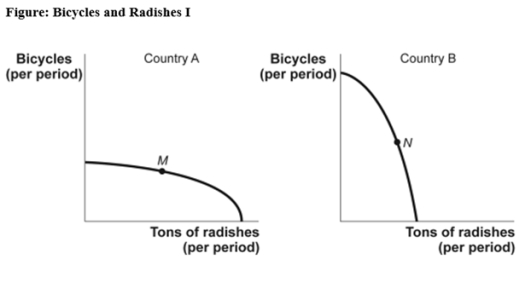Use the following to answer question:
-(Figure: Bicycles and Radishes I) Use Figure: Bicycles and Radishes I.The figure shows production possibility frontiers for two countries that produce only radishes and bicycles.The axes of the two graphs are measured in equivalent units.Country A is operating at point M,and country B is operating at point N.Suppose country A discovers a new technology that greatly increases its ability to produce bicycles but has no effect on its ability to produce radishes.This would:
Definitions:
Conclusion
The end or finish of an event, process, or text.
Categorical Syllogism
An argument based on deduction that consists of two premises and three distinct terms, with each term appearing exactly two times across the three propositions.
First Premise
The initial statement or proposition from which further reasoning is based in an argument.
Valid Deductive Argument
A logical statement where, if the premises are true, the conclusion necessarily follows and must also be true.
Q14: (Figure: Supply of Coconuts) Use Figure: Supply
Q27: (Table: Price, Quantity Demanded, and Quantity Supplied)
Q43: If the price of a commodity increases,
Q84: Foreign currencies are traded in the _
Q87: Scenario: Exchange Rate between the United States
Q105: Suppose the government sets a price floor
Q106: (Figure: Unemployment Rate over Time) Use Figure:
Q150: Dr. Colgate is a dentist who employs
Q160: When milk consumption decreased, a survey firm
Q346: Suppose that the United States and European